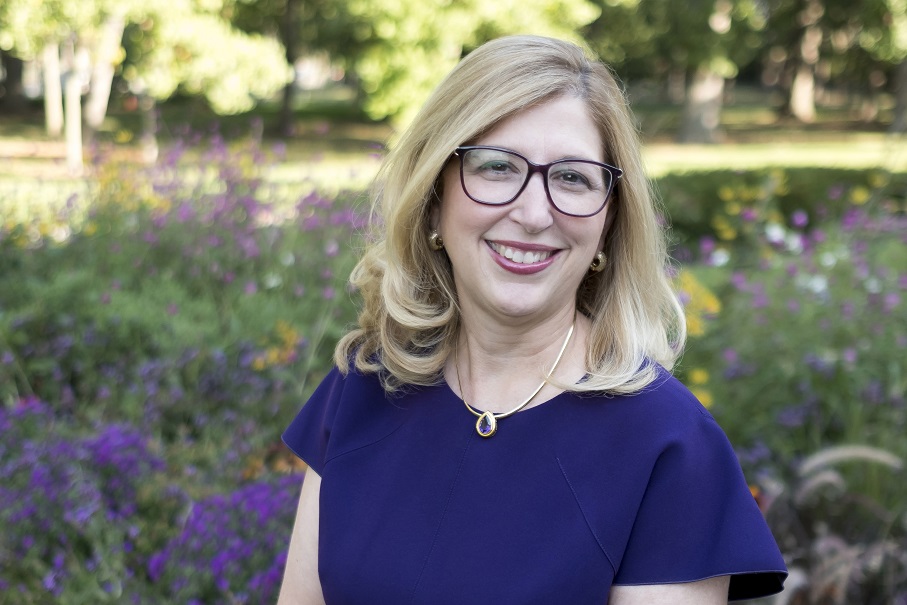
Endocrine News talks with Teresa K. Woodruff, PhD, recipient of the 2021 Endocrine Society Gerald D. Aurbach Award for Outstanding Translational Research about what the award means to her and how she came to focus her life’s work on oncofertility, a phrase that she first coined in 2006.
Teresa K. Woodruff, PhD, is no stranger to the Endocrine Society. As past president and former editor-in-chief of Endocrinology, Woodruff’s dedication to the specialty is well-renowned. It should come as no surprise then that she has been recognized as the 2021 Laureate recipient of the Gerald D. Aurbach Award for Outstanding Translational Research — an award recognizing outstanding contributions to research that accelerate the transition of scientific discoveries into clinical applications.
Woodruff is provost at Michigan State University in East Lansing, Mich., and the founder and director of the Oncofertility Consortium. The Consortium is an international team comprised of oncologists, fertility specialists, social scientists, educators, and policy makers armed with the mission of translating Woodruff’s research to the clinical care of cancer survivors facing the struggles of infertility.
Endocrine News recently spoke with her to learn how the oncofertility sub-specialty became her purpose.
Endocrine News: The Laureate Award is named in honor of Dr. Gerald Aurbach, the Society’s 68th president and a renowned researcher and clinician. As a former president of the Society yourself, what did news of the recognition mean to you?
Woodruff: Dr. Aurbach was a renowned president of the Society and combined administrative and service excellence with his groundbreaking translational work. I am always struck by how often excellence in one is interoperable with the other, and Dr. Aurbach is a template.
EN: How did oncofertility become the pinpoint of your life’s work? That is, was there a defining moment early in your career that sparked the trajectory into the specialty?
Woodruff: I was the basic science director for the Northwestern Lurie Comprehensive Cancer Center and was alerted that a young boy was coming downtown from our children’s hospital to bank sperm. I thought that was terrific and asked, “how to we take care of the pediatric girls?” Realizing there was nothing we did for pediatric, adolescent, or young adult women led to the formation of this field of medicine.
The vision of the field of oncofertility is for all patients facing loss of fertility due to medical conditions and/or gonadotoxic therapies to have access to oncofertility options and services.
EN: The website for your Oncofertility Consortium lists more than 140 partner facilities in the U.S. and dozens more abroad. What is the collective message you hope to send to women and couples across the globe facing the difficult challenges of conceiving after a cancer diagnosis?
Woodruff: The vision of the field of oncofertility is for all patients facing loss of fertility due to medical conditions and/or gonadotoxic therapies to have access to oncofertility options and services. The Oncofertility Consortium convened the field to enable the essential conversations necessary to drive oncofertility research, clinical practice, and patient options forward. We do this through shared values including collegiality, multi-disciplinary collaboration, inclusiveness, innovation, and altruism. All of its values are ultimately driven by patient-centeredness.
—Fauntleroy Shaw is a freelance writer based in Carmel, Ind. She is a regular contributor to Endocrine News.
Reproductive Life After Cancer
Advances in cancer treatment have led to a steady increase of survival rates among young cancer patients. Nowadays, while both women and men can live long after a cancer diagnosis, many face the struggles of infertility due to the disease or side effects of the treatment.
Partner experts with the Oncofertility Consortium, located in the U.S. and 45 more countries around the globe, help address a wide spectrum of issues that challenge these survivors as they pursue their dreams of parenthood, including:
- Mechanisms underlying the fertility threat of life-preserving cancer drugs.
- Methods for cryopreservation (freezing), storing and growing ovarian and gonadal tissue.
- In vitro follicle growth and oocyte maturation using a three-dimensional environment.
- Communication barriers between cancer patients and health care providers.
- Ethical and legal concerns regarding the use of fertility preservation technologies in cancer patients.
Source: Learn more at oncofertility.msu.edu.

